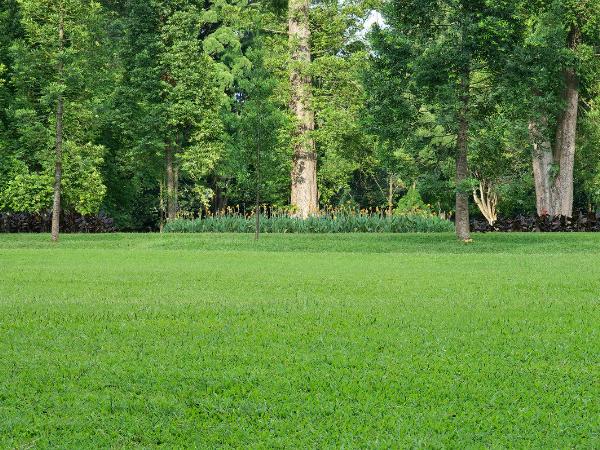Frequently Asked Questions
Can land clearing services work on steep or uneven terrain?
Yes, skilled land clearing services can effectively work on steep or uneven terrain. Our experienced team utilizes specialized equipment and techniques to safely and efficiently clear land, regardless of the terrain's challenges.
Do I need a permit for land clearing?
Whether a permit is required for land clearing depends on local regulations. Before proceeding with any land clearing, it is advisable to check with the relevant authorities to determine if a permit is necessary for your specific situation.
What is the difference between land clearing and land grading?
The key difference between land clearing and land grading is that land clearing involves the removal of unwanted vegetation, trees, and debris, while land grading involves the reshaping and leveling of the land surface to prepare it for construction or other purposes.
What are the benefits of land clearing?
The benefits of land clearing include preparing a site for new construction, improving property visibility and accessibility, and reducing the risk of fires, pests, and other hazards by removing overgrown vegetation.
How long does the land clearing process typically take?
The land clearing process typically takes 2-4 weeks, depending on the size and complexity of the project, as well as any existing structures or vegetation on the site that need to be removed.
What equipment is used for land clearing?
The equipment used for land clearing typically includes excavators, bulldozers, chainsaws, mulchers, and brush cutters, which are used to remove trees, stumps, and vegetation from the land.
What are the benefits of hiring a land clearing service?
Hiring a land clearing service provides benefits such as efficient removal of trees, shrubs, and debris, preparing a clean canvas for construction projects, and identifying potential issues with the property's trees through professional assessment.
How do land clearing services handle hazardous materials on site?
Land clearing services handle hazardous materials on site by employing strict safety protocols, proper containment and disposal methods, and collaborating with licensed professionals to ensure compliance with environmental regulations.
What are the regulations around land clearing in protected areas?
The regulations around land clearing in protected areas typically involve strict guidelines to preserve the environmental integrity of these sensitive locations, often requiring permits and adhering to specific land use policies.
How does land clearing affect biodiversity and ecosystem services?
Land clearing can negatively impact biodiversity and ecosystem services by destroying habitats, disrupting natural processes, and reducing the diversity of plant and animal species in the affected area.
How does land clearing affect climate change and greenhouse gas emissions?
Land clearing can contribute to climate change and greenhouse gas emissions by removing vegetation that absorbs and stores carbon dioxide, while also exposing soil that can release stored carbon into the atmosphere.
How does land clearing impact indigenous communities?
Land clearing can significantly impact indigenous communities by disrupting their traditional ways of life, destroying their cultural heritage, and diminishing their access to natural resources and sacred lands.
How does land clearing impact soil quality and fertility?
Land clearing can significantly impact soil quality and fertility. The removal of vegetation can lead to increased soil erosion, depletion of organic matter, and disruption of the soil's natural nutrient cycles, potentially reducing the overall fertility and productivity of the land.
Can I clear land myself or should I hire a professional?
Whether you should clear land yourself or hire a professional depends on the size and complexity of the project, safety considerations, and the equipment and expertise required. Hiring a professional land clearing service may be safer and more efficient for larger or complex projects.
What licenses and certifications do land clearing services need?
Land clearing services typically require certifications and licenses related to tree removal, waste disposal, and environmental regulations in order to operate legally and safely.
How do land clearing services handle sensitive ecosystems?
Land clearing services handle sensitive ecosystems by carefully assessing the area, employing selective clearing techniques, and implementing mitigation measures to minimize the impact on the environment and protect any vulnerable species or habitats.
How does land clearing impact property values and aesthetic appeal?
Land clearing can significantly enhance property values and aesthetic appeal by creating a more open, well-maintained, and visually appealing landscape, which is often highly desirable for potential buyers.
Do land clearing services remove tree stumps and roots?
Yes, land clearing services typically remove tree stumps and roots as part of the land clearing process. This ensures the area is fully cleared and prepared for the intended use, such as new construction or development.
What equipment is used for land clearing and grubbing?
The equipment used for land clearing and grubbing includes bulldozers, excavators, backhoes, skid steers, mulchers, and chippers to remove trees, stumps, and other vegetation from the site.
Can I get a land clearing consultation?
Yes, you can get a land clearing consultation. Our knowledgeable arborists will assess your property, identify any issues, and provide a tailored solution to address your land clearing needs.
How do I find a reliable land clearing service provider?
To find a reliable land clearing service provider, research local companies, read reviews, request quotes, and evaluate their expertise, equipment, and safety record to ensure they can meet your specific needs effectively.
Can land clearing be reversed or restored after damage?
Land clearing can be reversed or restored to a certain extent after damage, depending on the severity and the measures taken to rehabilitate the affected area. Proper land restoration efforts, such as replanting native vegetation and implementing soil conservation practices, can help mitigate the impact of land clearing and promote the natural recovery of the ecosystem.
Can land clearing services handle industrial-scale projects?
Yes, comprehensive land clearing services can indeed handle industrial-scale projects. Our experienced team has the expertise and equipment to efficiently clear vast areas, remove trees, shrubs, and debris, and prepare the site for large-scale construction or development.
How do I choose the right land clearing service?
Choosing the right land clearing service involves considering their expertise, equipment, safety practices, and ability to handle your specific needs, ensuring efficient and compliant land clearing for your project.
Do land clearing services provide site preparation services?
Yes, land clearing services typically provide site preparation services. This includes the removal of trees, shrubs, and debris, preparing the land for construction projects or other development.
How does land clearing impact natural disaster risk and mitigation?
Land clearing can impact natural disaster risk and mitigation by removing natural barriers that protect against flooding, landslides, and erosion, potentially increasing vulnerability to these events. Proper land management practices are crucial for mitigating disaster risks.
How do I prepare for land clearing on my property?
Preparing for land clearing on your property involves identifying and marking any valuable trees or structures you wish to preserve, as well as coordinating with local authorities to ensure compliance with regulations.
Can land clearing services work in remote or hard-to-reach areas?
Yes, land clearing services can work in remote or hard-to-reach areas. Our specialized equipment and experienced crews are equipped to handle projects in challenging terrain and locations, ensuring efficient land clearing regardless of accessibility.
What are the benefits of land clearing for agriculture?
The benefits of land clearing for agriculture include creating more arable land, improving soil quality, and removing unwanted vegetation to make way for crops or livestock. This process can enhance agricultural productivity and efficiency.
Can I do land clearing myself?
You can attempt to do land clearing yourself, but it is generally recommended to hire professional land clearing services. They have the necessary equipment, expertise, and safety protocols to efficiently and safely clear your land.
How long does land clearing take in my area?
The duration of land clearing in your area depends on various factors, such as the size of the plot, the density of vegetation, and the accessibility of the site. Our experienced team can provide a personalized estimate after an on-site assessment.
Are there any eco-friendly land clearing options?
There are indeed eco-friendly land clearing options available, such as selective tree removal, mulching, and mechanical land clearing techniques that minimize environmental impact while effectively preparing the site for construction.
What is the cost of land clearing?
The cost of land clearing varies depending on factors such as the size of the area, the density of vegetation, and the accessibility of the site. It typically ranges from $1,000 to $10,000 per acre.
Is there a licensed land clearing professional?
Yes, our land clearing services are provided by licensed and experienced professionals who are knowledgeable in safe and effective tree removal and lot clearing techniques.
How do land clearing services affect the environment?
Land clearing services can have both positive and negative environmental impacts, including removing vegetation that may affect local ecosystems, altering soil composition, and potentially releasing greenhouse gases. Responsible land clearing practices aim to minimize environmental disruption.
Who offers free estimates for land clearing?
We offer free estimates for land clearing services to help you understand the scope and cost of your project.
Do land clearing services provide debris removal?
Land clearing services typically include debris removal as part of their comprehensive services. They efficiently clear the area, removing any trees, shrubs, and other debris to provide a clean canvas for construction projects.
What are the consequences of improper land clearing techniques?
Improper land clearing techniques can lead to soil erosion, damage to surrounding vegetation, and disruption of local wildlife habitats, resulting in environmental degradation and potential safety hazards.
What safety measures do land clearing services take?
Land clearing services take comprehensive safety measures, including using personal protective equipment, following safety protocols, and maintaining proper communication to ensure the safe execution of land clearing operations.
What kind of insurance do land clearing services carry?
Land clearing services typically carry liability insurance to cover damages or injuries that may occur during the clearing process, as well as workers' compensation insurance to protect their employees.
What is the purpose of land clearing in urban development?
The purpose of land clearing in urban development is to prepare a site for new construction, such as buildings, roads, or infrastructure, by removing trees, vegetation, and other obstacles to create a clear and level surface for development.
Can land clearing be done without harming native vegetation?
Yes, land clearing can be done without harming native vegetation. Experienced professionals can carefully identify and protect native plants and wildlife during the clearing process, ensuring the preservation of the local ecosystem.
What equipment is used in large-scale land clearing operations?
Large-scale land clearing operations commonly utilize heavy machinery such as bulldozers, excavators, skid steer loaders, and chainsaws to efficiently remove trees, shrubs, and other vegetation from the land.
Can I get a quote for land clearing?
Yes, we can provide you with a quote for land clearing services. Our team of experts will assess your property, evaluate the scope of work, and provide you with a detailed, transparent quote tailored to your specific needs.
How does land clearing affect local ecosystems and wildlife?
Land clearing can significantly impact local ecosystems and wildlife by destroying habitats, disrupting food chains, and displacing or harming vulnerable species that rely on the affected area for survival.
How does land clearing affect water tables and aquifers?
Land clearing can lower water tables and affect aquifers by reducing the natural infiltration of rainwater, leading to decreased groundwater recharge and potential depletion of water resources.
What is the average cost of land clearing per acre?
The average cost of land clearing per acre can vary widely depending on factors such as terrain, vegetation density, accessibility, and local labor costs, but generally ranges from $500 to $5,000 per acre.
What is the process of land clearing?
The process of land clearing involves the removal of trees, shrubs, and other vegetation from a designated area to prepare the land for construction, development, or other purposes. This typically includes the use of heavy machinery to uproot and dispose of the existing vegetation.
What are the safety risks associated with land clearing operations?
The main safety risks associated with land clearing operations include falling trees, flying debris, heavy machinery, and potential contact with underground utilities. Proper safety protocols, PPE, and experienced professionals are crucial to mitigate these risks.
Can land clearing be done sustainably and responsibly?
Yes, land clearing can be done sustainably and responsibly by prioritizing environmental conservation, minimizing waste, and utilizing eco-friendly practices such as selective tree removal, soil preservation, and implementing reforestation initiatives.
What happens to the debris after land clearing?
The debris after land clearing is removed and properly disposed of, ensuring a clean and organized worksite for the subsequent construction project.
What are the best practices for land clearing in sensitive environments?
The best practices for land clearing in sensitive environments involve minimizing environmental impact, preserving vegetation and habitats, implementing erosion control measures, and following local regulations and guidelines to ensure the protection of sensitive areas.
What are the economic benefits of land clearing for development?
The economic benefits of land clearing for development include increased land availability for construction, improved access to natural resources, and the potential for increased property values and tax revenue.
What are the environmental impacts of land clearing?
The environmental impacts of land clearing include habitat destruction, soil erosion, loss of biodiversity, and increased greenhouse gas emissions as a result of deforestation.
What is the cost of land clearing services per acre?
The cost of land clearing services per acre varies depending on factors such as the size of the property, the density of vegetation, and the complexity of the project. On average, land clearing services can range from $1,000 to $5,000 per acre.
Is land clearing necessary for my property?
Land clearing may be necessary for your property if you plan to construct new buildings, lots, or structures, or if your trees or vegetation pose safety risks or hinder accessibility.
What safety protocols does land clearing entail?
Land clearing entails implementing various safety protocols to protect workers, the public, and the environment. These include establishing safety zones, using proper equipment, following OSHA regulations, and monitoring hazardous conditions throughout the process.
Does land clearing require ecological assessments?
Land clearing often requires ecological assessments to evaluate the potential environmental impact and ensure compliance with regulations. These assessments help identify sensitive habitats, endangered species, and other environmental concerns that must be addressed during the land clearing process.
How does land clearing facilitate agricultural projects?
Land clearing facilitates agricultural projects by removing obstacles such as trees, rocks, and vegetation, creating open, arable land suitable for farming, livestock grazing, or other agricultural activities.
Can land clearing reduce wildfire risks?
Land clearing can reduce wildfire risks by removing dense vegetation, creating firebreaks, and reducing fuel loads that contribute to the spread of wildfires.
What wildlife habitats are affected by land clearing?
Land clearing can adversely impact a variety of wildlife habitats, including forests, grasslands, wetlands, and other natural ecosystems that serve as homes for diverse flora and fauna.
How is topsoil preserved during land clearing?
During land clearing, topsoil preservation is achieved by carefully removing and stockpiling the top layer of nutrient-rich soil, which is later redistributed across the cleared area to maintain soil health and promote vegetation growth.
Does land clearing promote invasive species growth?
Land clearing can potentially promote the growth of invasive species by removing native vegetation and creating open habitats that are more susceptible to colonization by aggressive non-native plants. Proper site management and revegetation with native species can help mitigate this risk.
What are costs for clearing wooded land?
The costs for clearing wooded land can vary depending on factors such as the size of the area, the density of the trees, accessibility, and any permits or regulations that may apply. Typical costs can range from $3,000 to $20,000 per acre.
How can land clearing mitigate flood risks?
Land clearing can mitigate flood risks by removing obstructions that can impede water flow, allowing for better drainage and reducing the likelihood of pooling and flooding on the property.
What post-clearing land maintenance is necessary?
Post-clearing land maintenance typically involves regular monitoring and care for the remaining vegetation, controlling erosion, and addressing any potential safety or aesthetic concerns to ensure the site remains well-maintained and functional.





